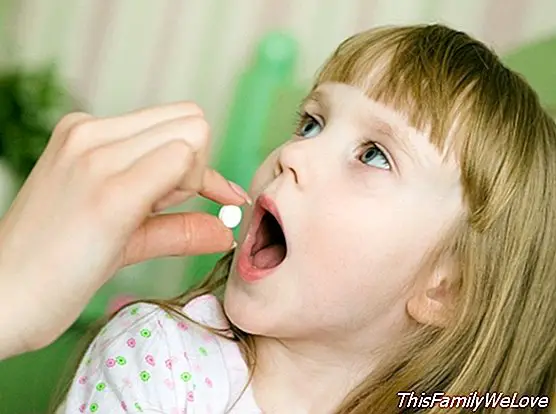Attention deficit disorder, when is it appropriate to medicate according to the AEP?

The development of children can be altered by numerous problems. One of the most known is Attention deficit disorder, ADHD, which can seriously affect the student life of the little ones and in other points of their life. Once this problem is detected, a treatment is necessary to solve this solution.
Usually the treatment consists of a psychological therapy, although sometimes it may be appropriate to resort to medication. When is it appropriate to prescribe drugs to the smallest and when not? From the Spanish Association of Pediatrics, AEP, provide several tips to parents so they know how to always choose the most advisable for their children.
Individualized treatment for ADHD
Since the AEP indicate that the treatment of children with ADHD it must always be individualized and taking into account the circumstances of the minor and the family. Although this does not focus on erasing your problem forever, if you try to reduce the symptoms that manifest. The pediatricians express that although each therapy is pertinent according to the cases, there are situations in which it is advisable to opt for the cognitive-behavioral psychological:
- When the symptoms of ADHD are mild.
- When there are doubts about the frequency and intensity of symptoms among the parents or between them and the teachers.
- When the diagnosis of ADHD is not clear.
- When patients are under 5 years old.
Pharmacological treatment
From AEP it is recommended that when the symptoms of ADHD seriously affect the daily life of patients, start with a combined treatment. Along with psychological therapy cognitive-behavioral, include medications among children who have this type of disorder.
The treatment with drugs in hyperactive behavior is known to have been commercialized in Spain for more than 25 years Throughout their history they have proven very effective in counteracting the symptoms of ADHD. Between 70 and 80% of patients respond favorably to the first therapy in which these products were used ..
Safety and efficacy, together with few side effects, make pharmacological treatment advisable for the treatment of these patients. The drugs reduce the symptoms of ADHD, improving school performance and child behavior and relationships both at home and at school. At the same time, enhance the effect of psychological and psychopedagogical interventions.
For the start of pharmacological treatment it is not necessary to perform no medical test, just review the patient's history and a scan to see if it is relevant. Currently there are two types of drugs in Spain for the treatment of ADHD: stimulants, methylphenidate, and non-stimulants, atomoxetine.
Once the drug is chosen, it will start with low doses and I know that they will be increasing every 1 or 3 weeks, depending on the patient's response and the appearance, or not, of side effects. It will be the pediatrician who assumes the responsibility responsible for evaluating the efficacy and tolerability of the medication through periodic visits, much more frequent at the beginning of the therapy and more distanced in time, every 3-6 months, after adjusting the quantity supplied.
Although the treatment is individualized, the general guidelines for each drug are:
- Methylphenidate immediate release, in 2-3 doses per day.
- Methylphenidate prolonged release, one dose in the morning.
Atomoxetine, it is recommended to administer in a single dose in the morning. If there are tolerance problems, it can be administered at night or spread the dose between morning and night.
The duration of the treatment itself must be considered individually, depending on the continuity of the symptoms and the repercussion that these may have on the child's or adolescent's life.
For patients who are taking stimulants, an accepted practice is the realization of short periods, of 1 or 2 weeks per year, without pharmacological treatment, in order to assess the functioning of the child or adolescent, both at home and at school. One of the best times to make this evaluation without treatment is usually at the beginning of the school year.
What are the side effects?
Side effects usually appear at the beginning of treatment, although they are rare, of low intensity, transient and low gravity In very few cases they force the suspension of treatment. It is important to be able to consult with the doctor responsible for the therapy for any adverse effects before stopping the administration of the drug.
- Stimulants (methylphenidate).Loss of weight and appetite, especially at the beginning of treatment; difficulty falling asleep (conciliation insomnia); headache and, much more infrequently, tics and restlessness.
- Not stimulating (Atomoxetine) Loss of weight and appetite, especially at the beginning of treatment; drowsiness; gastrointestinal symptoms, such as abdominal pain, nausea or vomiting; dizziness and fatigue. Jaundice may appear very infrequently (the skin becomes yellow due to the increase in bilirubin), a reflection of liver damage that forces the suppression of treatment.
Damián Montero
It may interest you:- 10 keys to help ADHD
- How to identify ADHD in the classroom
- Hyperactivity and attention deficit: ADHD




